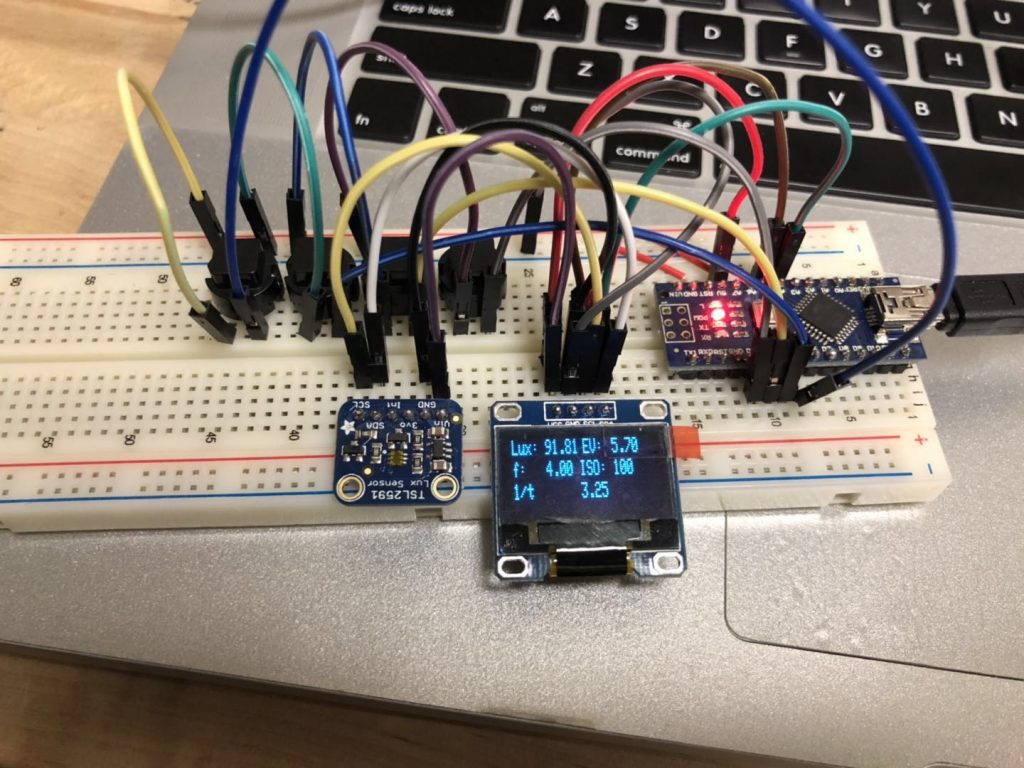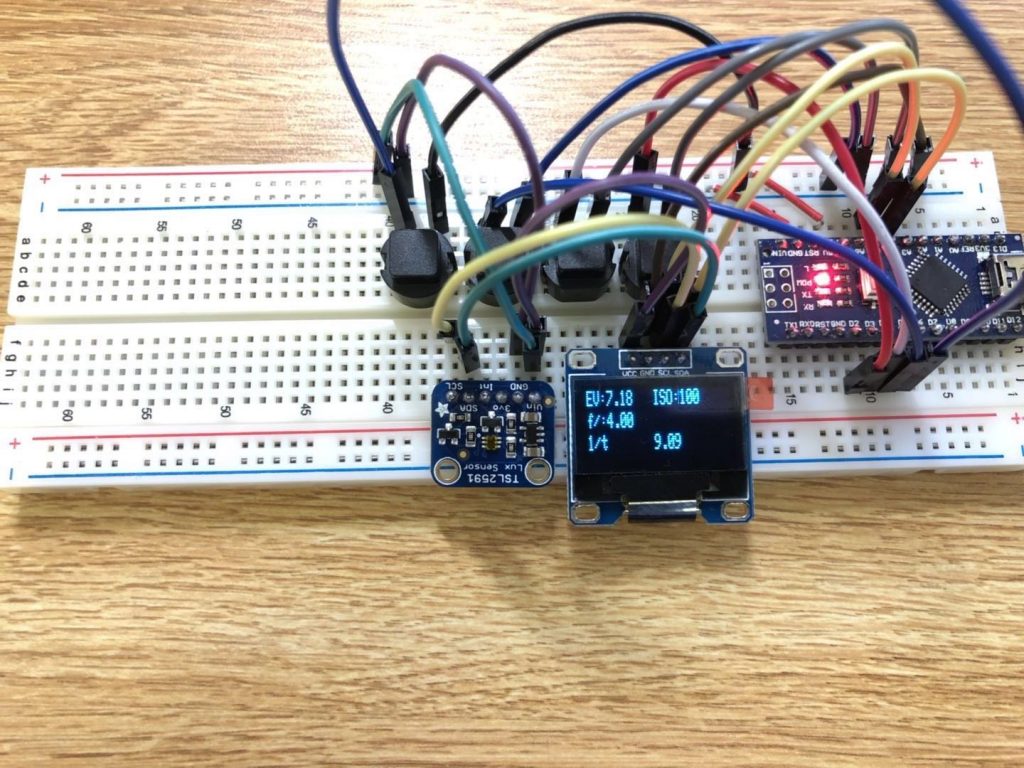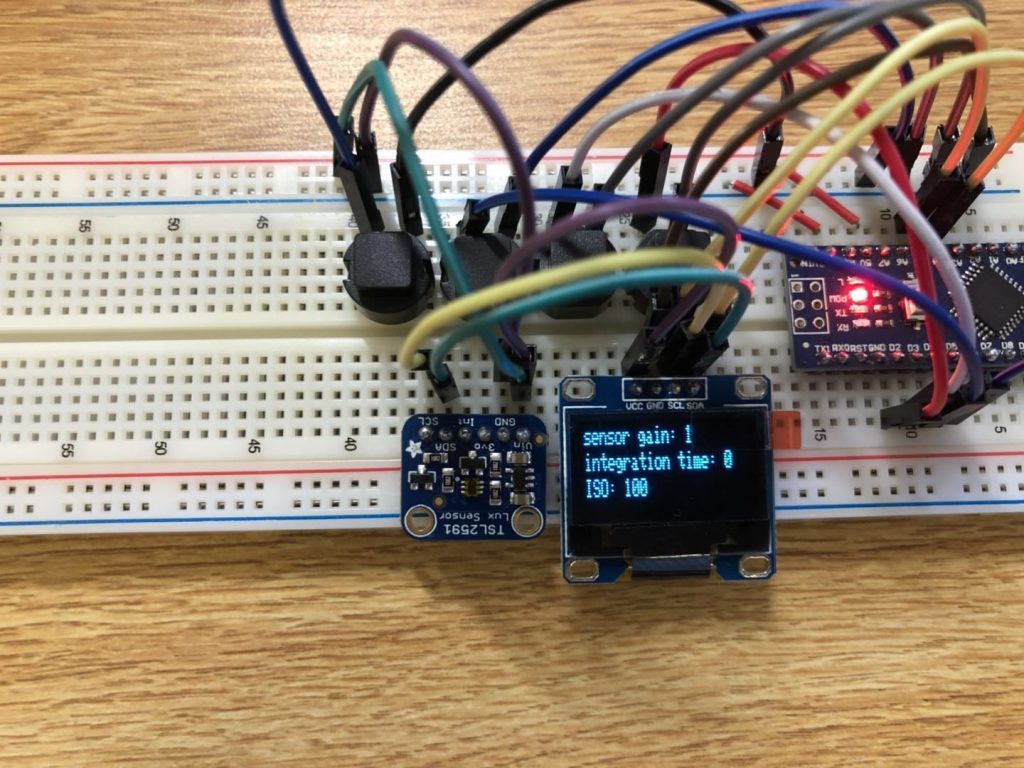While Yichi is busy with his linear CCD project, I decided to start a small project (quite small when compared with Yichi’s CCD). This project will be a light meter for photography. I have a Mamiya 645 for medium format that does not have any metering to it. Right now I’m using a smart phone app that will get the reading from the camera. However, I’m just too lazy to grab my phone from my pocket – unlock the phone – open the app – take a snapshot and get the reading – finally dial that numbers into my camera.
The meter consists of a TSL 2591 light sensor, a 0.96” OLED display, an Arduino nano and four buttons, as shown below:

Both the sensor and screen use IIC protocol to save up some wiring (still a mess). The sensor only returns lux value, and some log equations are needed to convert lux into EV (Exposure value) and then using the aperture number provided to calculate the shutter speed under certain ISO. Right now this is an aperture priority light meter, which will only take arbitrary aperture value and returns corresponding shutter speed for correct exposure.
Over the weekend, I added some features into the light meter: a main page and a configuration page. The sensor has three levels of gains and six different integration time (the longer the integration time is, the more accurate the reading will be). A simple auto gain is set up to adjust the sensor gain for weak light and bright light (when the sensor is out of range under current gain, it will return 0.0 lux and the program will detect that and crank down the gain). For integration time, I just leave it as 100ms – the shortest – and I can always change that in the configuration page. The new display looks like below:


The Arduino code for this project is still a work in progress. I need to optimize the button response (interrupt rather than polling) as well as add more features (shutter priority and exposure compensation). Also I’m thinking about adding a thin tube directly above the sensor to make a spotmeter – which I need to experiment about the compensation and adjustment in this new mode when compared with a professional light meter. I will keep you updated.
 Text published under CC BY-SA 4.0
Text published under CC BY-SA 4.0